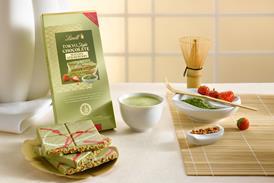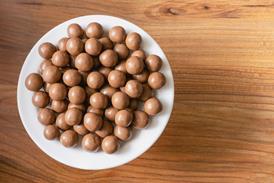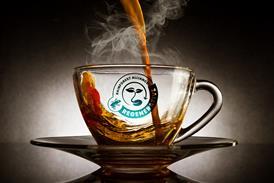Marketing: It's functional. Enjoy...
Nutrition is powering what used to be solely an indulgence market and convenience comes a healthy second. Mary Carmichael explains why
If you were under the impression that confectionery was solely about fun and indulgence then think again. In the 21st century, sweets can boost your IQ, pep up your energy, cure your sore throat and soothe your weight-obsessed conscience and all you have to do is enjoy. The future for confectionery is functional.
Nutrition is the driving innovative force, with the market showing similar patterns to the booming energy drinks market.
Sugar-free is already well-established, and new sugars are being developed to meet specific marketing demands. EU directives which cover issues such as proportions of cocoa solids in chocolate, rules on GMOs, allergen labelling and declaration of origins bring challenges for manufacturers. New and unusual functional ingredients are transforming what were once simple energy boosters into super snacks.
Barre Memoire, for example, a diet cereal bar from French company Nutrition & Santé, contains soya phospholipids, said to aid the memory.
One of Vivil's German ranges includes guarana, taurine, royal jelly and vitamin C, while Leaf's sugar-free Dutch chewing gum contains spirulana for energy.
There are Japanese sweets which protect children's teeth from cavities, and German apple vinegar chews for vision and digestive benefits. The EU has approved cholesterol-reducing Benefat, so fat-burning sweets may lure the peckish dieter.
Mainstream British brands are not lagging behind. Wrigley's has added throat cosseting Soothing Action Honey and Lemon to its Airwaves brand and Mars has just brought out Zinc 48 lozenges with vitamin C to boost the immune system. Even Boots' Cranberry Juice Pastilles help urinary tract complaints. More pharmaceutical companies are expected in the arena.
The organics boom hasn't bypassed confectionery either. Specialist producer Halo Foods is one of several to target Soil Association accreditation and is now producing organic products for major multiples.
Of course, it's not all health-oriented. British consumers show no sign of losing their passion for chocolate, and chocolate confectionery is still viewed as an indulgence.
Convenience is also still a driving force as boundaries blur and snacking stretches further into mealtimes. The big names continue to extend their successful countlines into formats more appropriate for the booming lunchbox and munching-on-the-move sectors.
Novelty and children's products are important, but manufacturers should avoid health messages when targeting them.
"This could put them off for life," warns Brian Urbick, founder of market research and strategic development company Consumer Knowledge Centre.
Urbick says children are much more attracted to the excitement and challenge of extreme flavours and products with a built-in control or play' factor, such as Haribo's Build a Burger. Interesting packaging, and shapes, and the right' character licences also work well.
The key, overall, is recognising the target market and marketing and designing appropriately, according to Dorothy MacKenzie, director of brand consultancy Dragon.
She points out that society is ageing, household size is diminishing, the concept of family has changed and we have new ways of working. Our social conscience has shifted, as has our attitude to age and mealtimes.
Consumers are focused on health, stress reduction and short-term fixes. They want to live life to the full with clean living therapies, salad bars and the like but they also look for thrills and challenges. Indulgence, hedonism, fantasy and novelty still appeal.
Mackenzie advises manufacturers to look more closely at older consumers as a target market. They are big consumers of treat size confectionery for example, but this format is rarely marketed to them. Targeting older people's need states and concerns such as relaxation, indulgence and concentration and making advertising relevant could prove effective.
Despite mirroring the wider food market in many key areas, confectionery does have one big difference. Increased brand globalisation hasn't percolated here and brands still tend to be localised and fragmented.
In Europe as a whole, less than half the sugar confectionery is branded and global brands are rare. Mars owns five of the top six global confectionery brands Mars Bar, Snickers, Milky Way, M&M's and Twix but together they account for only 6.4% of the market by value.
Brand acquisition will become more widespread but this brings strategic problems because national and even regional tastes differ.
{{FOCUS SPECIALS }}
Close menu
- Home
- Retail & Wholesale
-
Products & Suppliers
- Back to parent navigation item
- Products & Suppliers
-
Product Categories:
- Back to parent navigation item
- Product Categories:
- Alcoholic drinks
- Bakery
- Cereals & breakfast
- Cheese
- Chicken & poultry
- Chocolate
- Confectionery
- Crisps, nuts & snacks
- Dairy
- Fish
- Fresh produce
- Frozen
- Household
- Meat
- Own Label
- Sauces & condiments
- Seasonal
- Soft drinks
- Vaping
- Vegan & plant-based
- World foods
- Suppliers
- People
- Reports & Data
-
Topics A-Z
- Back to parent navigation item
- Topics A-Z
-
Popular topics:
- Back to parent navigation item
- Popular topics:
- Cost of living crisis
- Crime
- Deposit Return Schemes
- Finance
- Government & Regulation
- Health
- Inflation
- Loyalty
- Marketing
- Mergers & Acquisitions
- New Product Development
- Sourcing
- Supply chain
- Sustainability & environment
- Technology
- Ultra Processed Foods
- Vaping
- A-Z all topics
- Content by type:
- Events
- Ask iA (beta)
- Subscribe now
Sign in to comment on this article
Not logged in before? Register for FREE guest access today.
You will be able to:
- Read more stories
- Receive daily newsletters
- Comment on stories
Advert













No comments yet